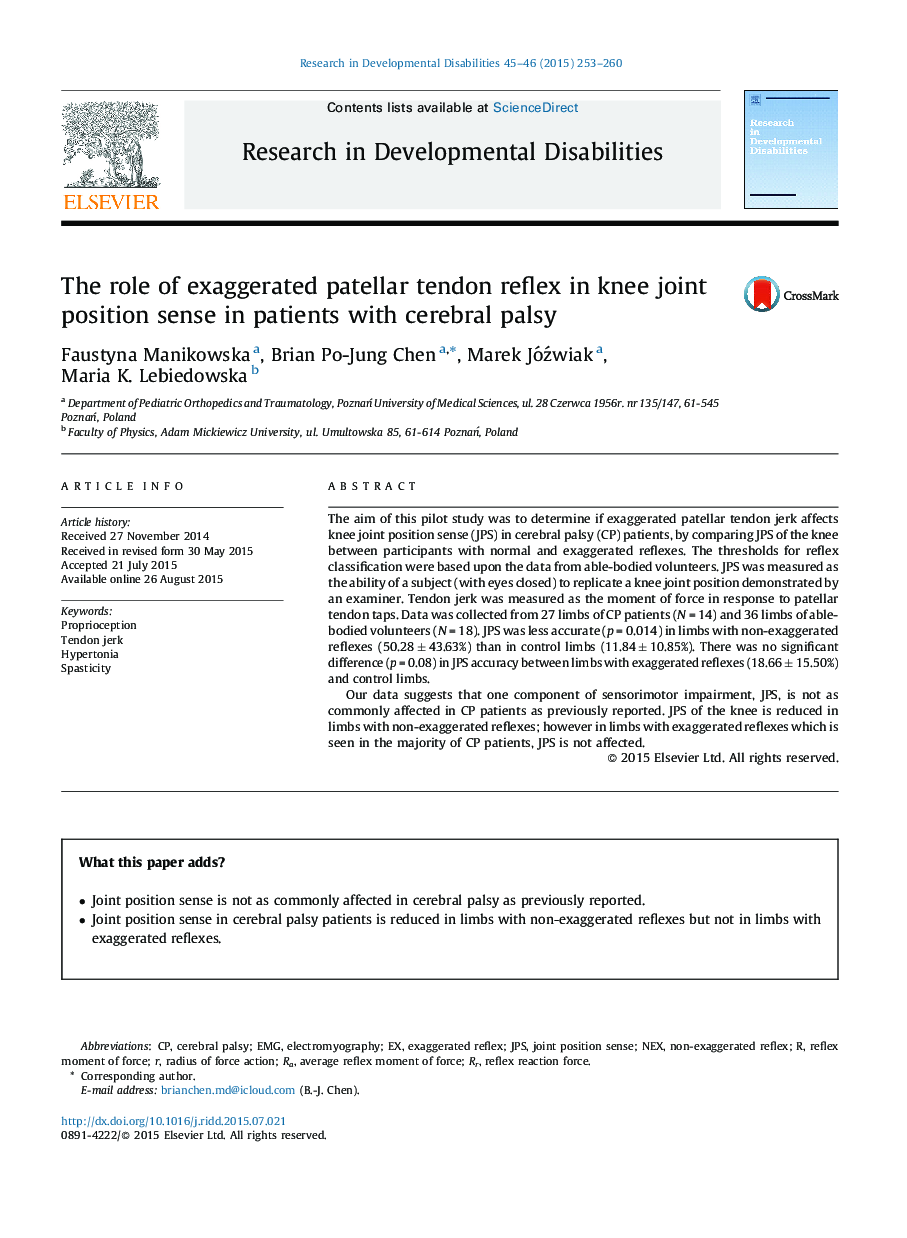| Article ID | Journal | Published Year | Pages | File Type |
|---|---|---|---|---|
| 371177 | Research in Developmental Disabilities | 2015 | 8 Pages |
•Joint position sense (JPS) is considered a significant impairment that restricts motor control in patients with cerebral palsy (CP).•It is well established that monosynaptic tendon reflexes contribute to JPS.•JPS of the knee and patellar tendon reflexes were studied in children with CP and able-bodied volunteers.•JPS is not as commonly affected in patients with CP as previously reported.•JPS in patients with CP is reduced in limbs with non-exaggerated reflexes but not in limbs with exaggerated reflexes.
The aim of this pilot study was to determine if exaggerated patellar tendon jerk affects knee joint position sense (JPS) in cerebral palsy (CP) patients, by comparing JPS of the knee between participants with normal and exaggerated reflexes. The thresholds for reflex classification were based upon the data from able-bodied volunteers. JPS was measured as the ability of a subject (with eyes closed) to replicate a knee joint position demonstrated by an examiner. Tendon jerk was measured as the moment of force in response to patellar tendon taps. Data was collected from 27 limbs of CP patients (N = 14) and 36 limbs of able-bodied volunteers (N = 18). JPS was less accurate (p = 0.014) in limbs with non-exaggerated reflexes (50.28 ± 43.63%) than in control limbs (11.84 ± 10.85%). There was no significant difference (p = 0.08) in JPS accuracy between limbs with exaggerated reflexes (18.66 ± 15.50%) and control limbs.Our data suggests that one component of sensorimotor impairment, JPS, is not as commonly affected in CP patients as previously reported. JPS of the knee is reduced in limbs with non-exaggerated reflexes; however in limbs with exaggerated reflexes which is seen in the majority of CP patients, JPS is not affected.
